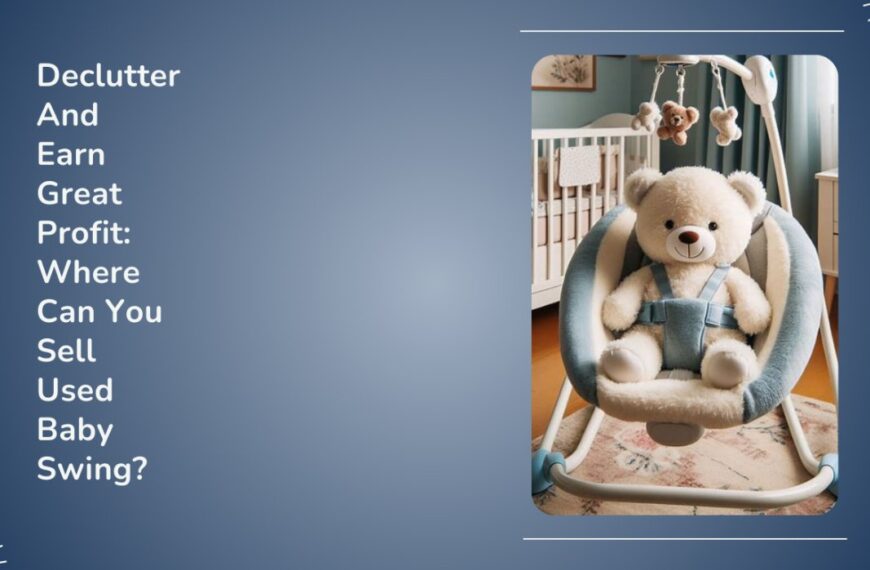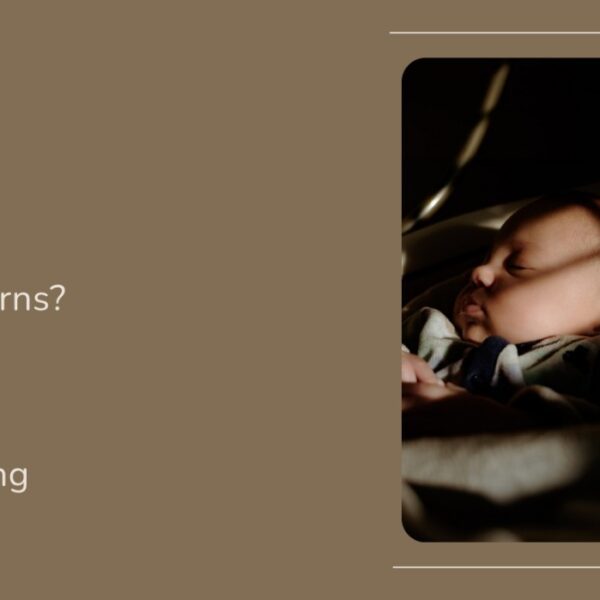Do you ever wonder that the swing your baby loves so much might be harmful to his spine and feel curious to get the answer of Are baby swings bad for spine?
Its a burning question many parents have.
Because no parent in this world can compromise on baby’s spinal health at any cost.
Perhaps you’ve come across various articles on this topic, but they left you even more confused by putting all the technical stuff there.
Don’t worry, we will not make it complicated like a doctor’s talk. We’ll explain everything in a way that’s easy to understand.
By the end of this blog post, you’ll know:
- How your baby’s spine grows and stays healthy
- The truth behind “Are baby swings bad for Spine?”
- How to use a baby swing safely in the right way
- How to regularly check your baby’s spine to make sure it’s growing normally
So let’s get started and find out the answer to “Are baby swings bad for Spine?”
People Also Read: Are Swings Bad for Babies Hips?
Table of Contents
Five Phases of Spine Development
Before we dive into the nitty-gritty of the topic “Are baby swings bad for Spine” let’s first understand how your baby’s spine develops and grows.
Your baby’s spine goes through five phases of development from birth to 18 months.
Each phase has its own characteristics and challenges and requires different types of support and stimulation.
Here are the five phases of baby spine development:
Phase 1: The Primary Spine Curve
This is the first curve that your baby’s spine has when he is inside your womb.
It protects the baby from getting hurt when he is born. It makes their spine look like a C-shape.
Phase 2: The Thoracic Kyphosis
Thoracic Kyphosis is the second curve that forms in your baby’s spine when he is a newborn.
It makes their chest bend backwards slightly.
It is recommended to lay your baby on his side or using a sling to provide gentle support to ensure this curve develops properly.
Phase 3: The Curves in Baby’s Neck and Lower Back
These are the third and fourth curves your baby’s spine develops when they are 3 to 6 months old.
These curves make his neck and lower back bend forward slightly.
Your baby should spend a lot of time on his tummy and lift his heads up to help these curves form.
You should touch their opposite hand and foot to help their brain and spine work together.
Phase 4: The Crawling Phase
Crawling phase typically occurs between 6 and 10 months of age.
Your baby’s spine goes through significant growth and strengthening in this phase.
Crawling helps to develop the muscles in their arms, legs, and core, which in turn supports the maturation of their spine.
Phase 5: The standing and walking phase
The next phase is the standing and walking phase, usually around 9 to 12 months of age.
In this phase, your baby will pull himself up and try to stand and walk on his own.
This helps their spine become longer and stronger as they grow taller.
Parents should not stand them up too early, or it may cause problems for their spine.
Let’s give their spines the time they need to grow strong and healthy!

As you can see, your baby’s spine development is a complex and dynamic process that requires proper care and attention.
But how does a baby swing fit into this picture?
Let’s find out (uncover) in the next section.
Are baby swings bad for Spine?
The impact of baby swing on the baby’s spine can vary depending on how long and how often they are used.
If your baby uses it for a short time under your supervision, baby swings can be absolutely safe to use and cause no harm to the baby’s spine.
However, if you use baby swings, car seats or any other containment gadget for a longer time or use it to let your baby sleep in it, then it can pose some risks to your baby’s spine health and development.
In this case, some possible impacts of a baby swing on your baby’s spine can be:
- Baby Swing can put pressure on your baby’s spine, especially when they are sitting upright or semi-upright. This pressure can lead to poor posture and abnormal growth patterns.
- The pressure exerted by a baby swing can also interfere with the primary and secondary spine curves that your baby needs to form during the development of the spine.
- Baby swings can increase the risk of SIDS, asphyxiation, and postural deformities if your baby falls asleep in the swing.
- Baby swings can delay or impair the development of your baby’s spine muscles and bones, especially if they spend too much time in it.
It can happen because they are not using their own muscles to move and balance themselves.
You should always consult a pediatrician if you have doubts or concerns about your baby’s spine health.
These impacts can be minimized or avoided by following the safety guidelines and recommendations for using baby swings.
The key is to use it safely and responsibly and not rely too much on the swing.
People Also Read: Best Baby Swing for Travel
Safety Guidelines for Using Baby Swings
So, how can you use a baby swing safely and responsibly?
The good news is that there are some simple and practical tips that you can follow to make sure your baby is comfortable and secure in the swing.
Here are some of the safety guidelines and recommendations by AAP (The American Academy of Pediatrics) for using a baby swing:
- Always supervise your baby while they are in the swing. Never leave them alone or out of your sight.
- Use the safety harness provided with the swing to keep your baby safe and secure.
Adjust the harness according to your baby’s size and weight. Don’t let the straps twist or get loose. - Never place a swing on an elevated surface. Always put the swing on the floor and away from stairs, windows, furniture, or other hazards.
Ensure the swing is stable and does not tip over or fold up easily. - Use baby swings only for short periods during the day while your baby is awake. Don’t use baby swings for sleeping or daytime naps.
If your baby falls asleep in the swing, move them to a firm, flat sleeping surface as soon as possible. - Babies 4 months old and younger should swing in the most reclined position. This helps them avoid slouching and suffocating.
By following these important safety guidelines, you don’t have to worry about any problems related to your baby’s spine caused by the swing.
It ensures your baby stays safe and happy while using the swing.
Monitor your Baby’s Spine Health and Development
Besides using a baby swing safely and responsibly, you also need to monitor your baby’s spine health and development regularly.
How can you tell if your baby’s spine is developing normally?
There are some signs and symptoms that you can look for, such as:
- Take time to observe your baby’s posture and movements. Notice if they have any difficulty in holding their head up or if their spine appears to be curved or misaligned.
- You should check your baby’s skin for any marks, dimples, tufts of hair, or birthmarks along the spine.
These could indicate a hidden spinal defect or problem that may need further evaluation. - You should regularly measure your baby’s height and weight and compare them with the standard growth charts.
If your baby is growing too slowly or too fast or has any delays or difficulties in their physical, mental, or social development, it could be a sign of a spinal problem.
If you notice any of these signs or symptoms in your baby, consult your pediatrician as soon as possible.
They can perform some tests and examinations to diagnose any spinal problems and recommend the best treatment options.
Conclusion
In conclusion, a baby swing is absolutely safe if used for short intervals, and parents follow all safety guidelines.
It can be a lifesaver for busy parents and a great source of entertainment for babies.
However, if used carelessly by parents or for too long, baby swings can pose some risks to your baby’s spine health and development.
You also need to monitor your baby’s spine health and development regularly with the help of those signs mentioned above.
If you notice any of these signs or symptoms in your baby mentioned above, consult your pediatrician as soon as possible.
They can diagnose any spinal problems and recommend the best treatment options.
Early detection can make a big difference in your baby’s spine health and development.
We hope this blog post has helped you understand a baby’s spinal development and answered your question, “are baby swings bad for spine?”
Thank you for reading!
Related Blog Posts





